

John F. Kennedy Presidential Library and Museum
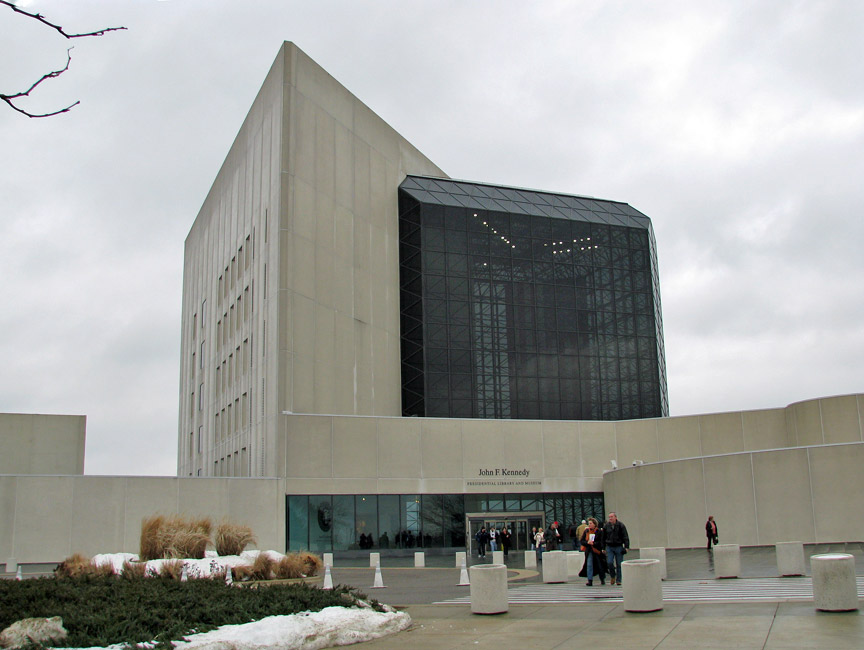
John F. Kennedy Presidential Library and Museum
The John F. Kennedy Presidential
Library and Museum is the presidential library and museum of the 35th President
of the United States, John F. Kennedy. It is located on Columbia Point in the
Dorchester section of Boston, Massachusetts, USA, next to the Boston campus of
the University of Massachusetts and the Massachusetts Archives. It was designed
by the architect I. M. Pei. The building is the official repository for original
papers and correspondence of the Kennedy Administration, as well as special
bodies of published and unpublished materials, such as books and papers by and
about Ernest Hemingway. The library and museum were dedicated in 1979 by
President Jimmy Carter and members of the Kennedy family. It can be reached from
nearby Interstate 93 or via shuttle bus from the JFK/UMass stop on the Boston
subway's Red line.
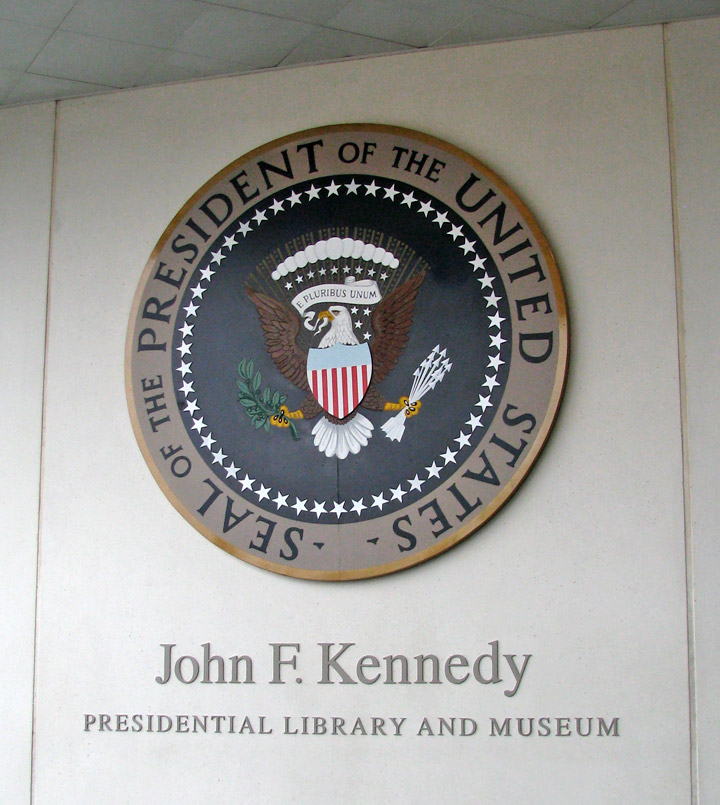
During weekend visit to Boston on October 19, 1963, President Kennedy, along
with John Carl Warnecke — the architect who would design the President’s tomb in
Arlington — viewed several locations offered by Harvard as a site for the
library and museum. At the time there were only four other Presidential
Libraries; The Hoover Presidential Library, the Franklin D. Roosevelt Library,
the Truman Library, and the Dwight D. Eisenhower Library. They were all
scattered around the country in small towns from New York to Iowa. He hadn’t
decided on any design concept yet, but he felt that the existing Presidential
Libraries were placed too far “away from scholarly resources.”
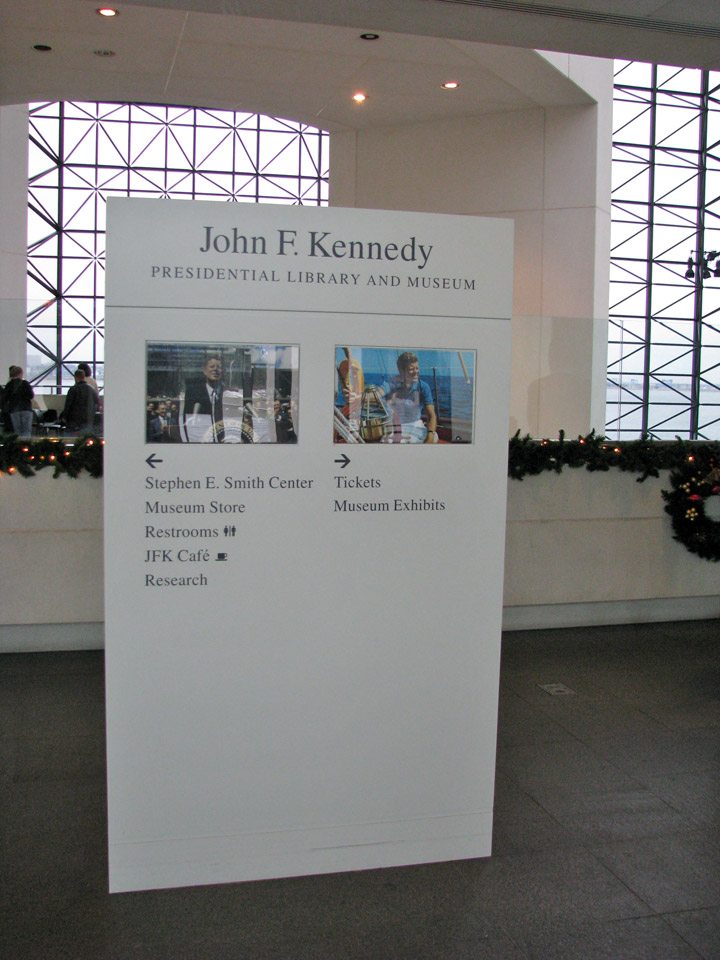
Kennedy chose a plot of land next to the Graduate School of Business
Administration. The building would face the Charles River which was a few feet
away, and on the other side of which, the dormitories that included Winthrop
House where Kennedy spent his upperclassman days. Kennedy was assassinated a
month later, on November 22, 1963.
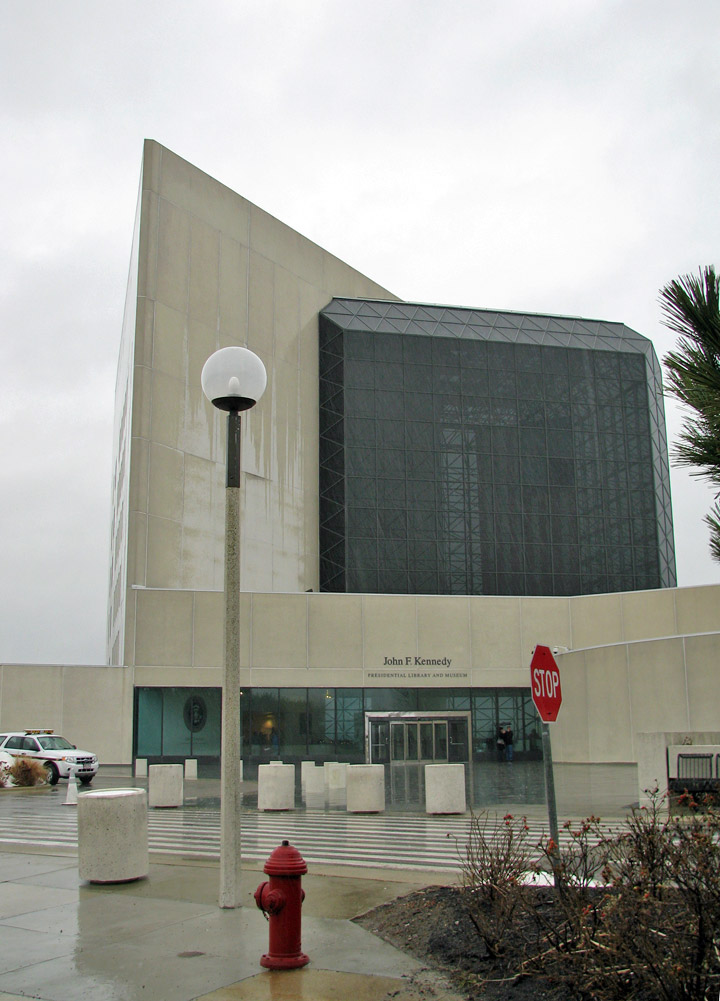
Being that Kennedy encouraged his Administration to save affects of both
personal and official nature, the complex would not just be a collection of the
President’s papers, but “a complete record of a Presidential era.” And so, the
building would have the word museum appended to its name: John F. Kennedy
Presidential Library and Museum.
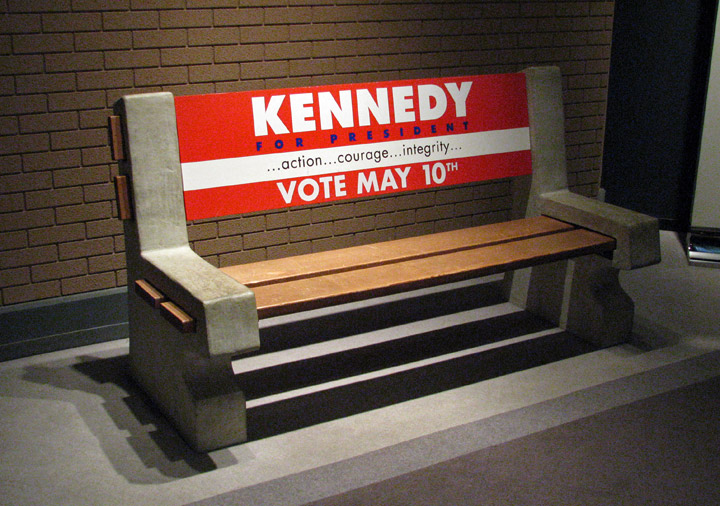
first to win the primary on May 10
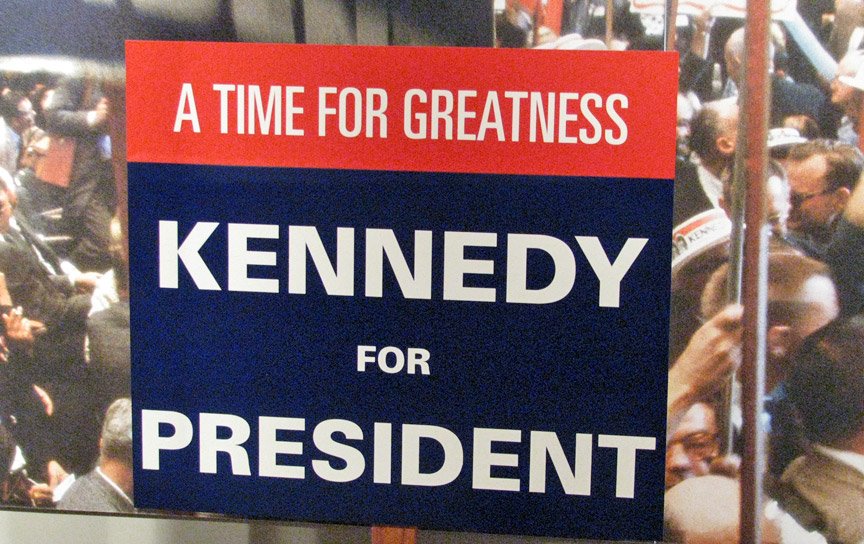
then at the nominating convention
Progress on the building began shortly after his death. On January 13, 1964, the then Attorney General Robert F. Kennedy announced that a taped oral-history project was to be undertaken for inclusion in the library. The project would feature his Administration staff, friends, family and politicians from home and abroad. The Attorney General also announced that Eugene R. Black, Sr. agreed to serve as chairman of the board of trustees and that $1 million of Black’s $10 million goal had been given to the trust by the Joseph P. Kennedy Jr. Foundation.
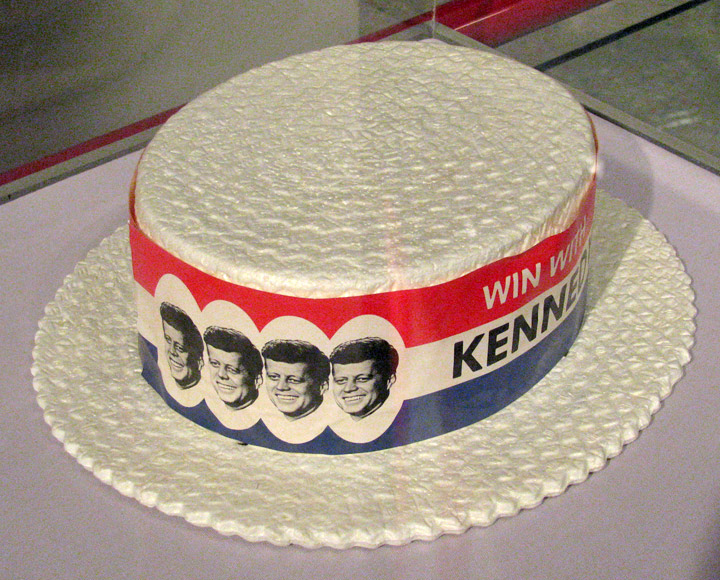
The death of the President was still fresh in the hearts and minds of the
American public and by March of that year $4.3 million had been pledged,
including 18,727 unsolicited donations from the public. Large donations came
from the Hispanic world with Venezuela pledging $100,000 and Governor of Puerto
Rico, Luis Muñoz Marín offering the same. The oral-history project also began
recording, starting with Mrs. Kennedy and Robert Kennedy. Originally projected
to consist of interviews with 150 people, 178 had agreed to participate and the
total number of expected participants doubled to 300, with just one person
declining to take part, a Secret Service agent.
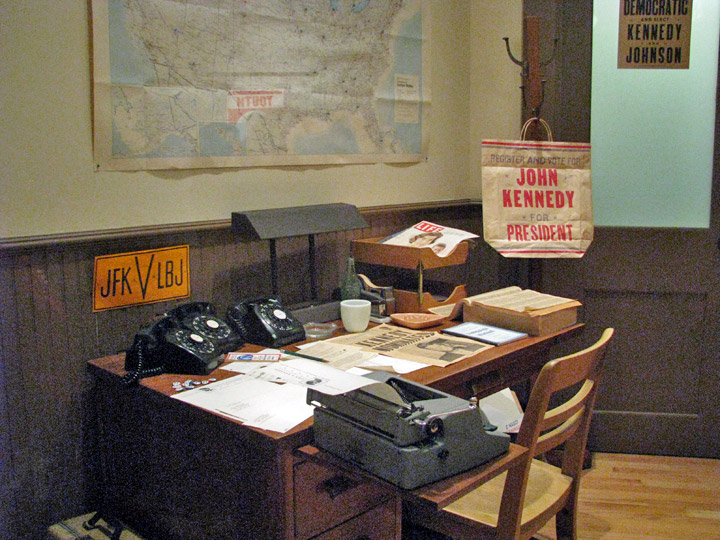
campaign office
Also by this time fourteen architects were named to serve on a design advisory committee:
Americans Base
Pietro Belluschi Dean of the M.I.T. School of Architecture
Louis Kahn University of Pennsylvania Architecture School
I. M. Pei New York
Mies van der Rohe Chicago
Hugh Stubbins Cambridge
Paul Thiry Seattle
Benjamin C. Thompson Cambridge
John C. Warnecke Washington
Overseas Base
Alvar Aalto Finland
Franco Albini Italy
Lucio Costa Brazil
Sven Markelius Sweden
Sir Basil Spence England
Kenzo Tange Japan
Over the following months pledges continued to funnel in for the building still
being conceptualized by the various architects. Some notable donations include
$900,000 handed over to the Postmaster General, John A. Gronouski on July 9,
1964. It was the sum of a campaign encompassing 102 Federal agencies. Gronouski
said many of the Federal employee contributions were in the form of a $5
withholding each payday for a period of three years. The next day the Indian
Ambassador to the United States, Braj Kumar Nehru presented Mr. Black with a
check for $100,000 during a ceremony at the River Club. Mr. Nehru said that the
Indian people were hit by a “sad blow” when the President died, and that they
held him “in the highest regard, esteem and affection.” He desired for Indian
students abroad in the US to utilize the library, at the time, still planned for
construction at Harvard along the banks of the Charles River.
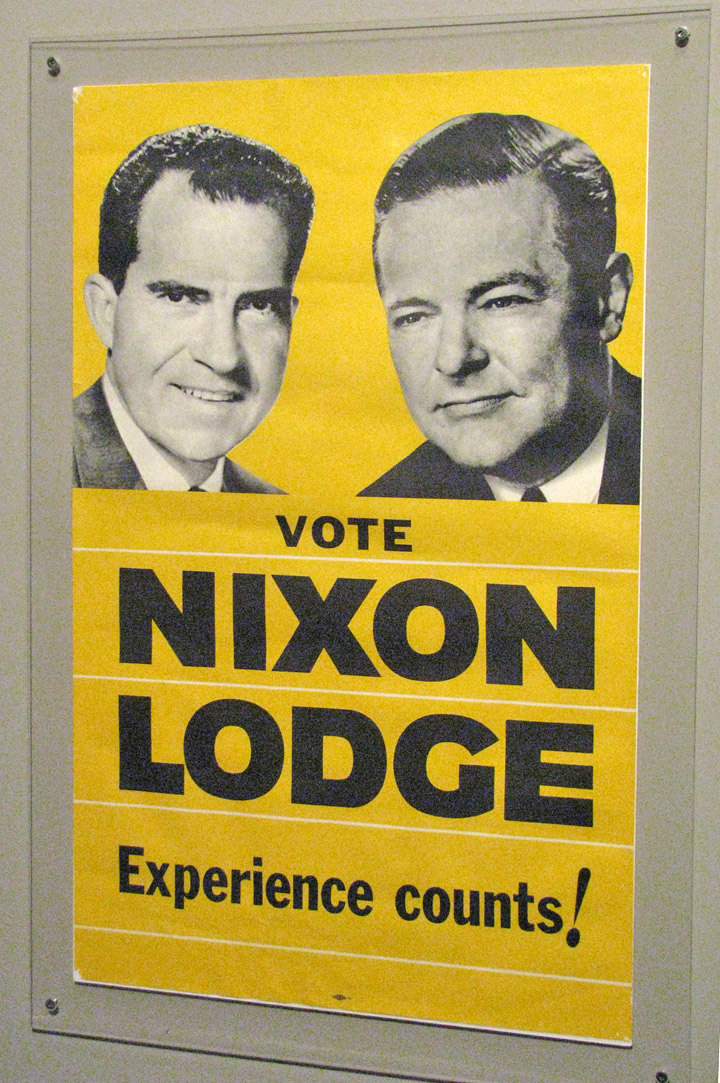
his opponent
On December 13, 1964, the Kennedy family announced that I.M. Pei was unanimously chosen by a subcommittee as the architect of the library. Even though Pei was relatively unknown amongst the list of candidates, Mrs. Kennedy, who viewed him as filled with promise and imagination and after spending several months inspecting the many architects’ offices and creations, selected him to create the vision she held for the project. Pei did not have a design yet, but the idea as described by Robert Kennedy was to “stimulate interest in politics.” Meanwhile, the suggestion that Harvard may not be a suitable site for the library had begun cropping up. When asked if Pei may have had to start from scratch, he said this was the case. With an “encouraging grin” Robert Kennedy simply wished Mr. Pei “Good luck.”
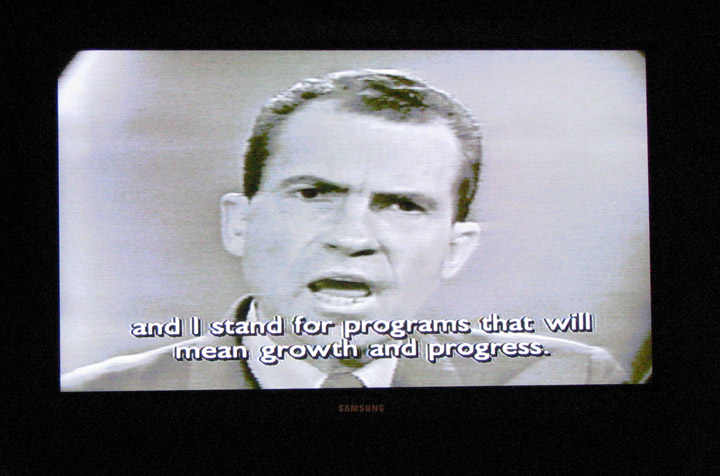
Nixon during the Presidential Debate
Not long before Pei was selected, the
$10 million goal set by Mr. Black had been reached. By 1965, fundraising was
suspended when the contributions reached $20 million.
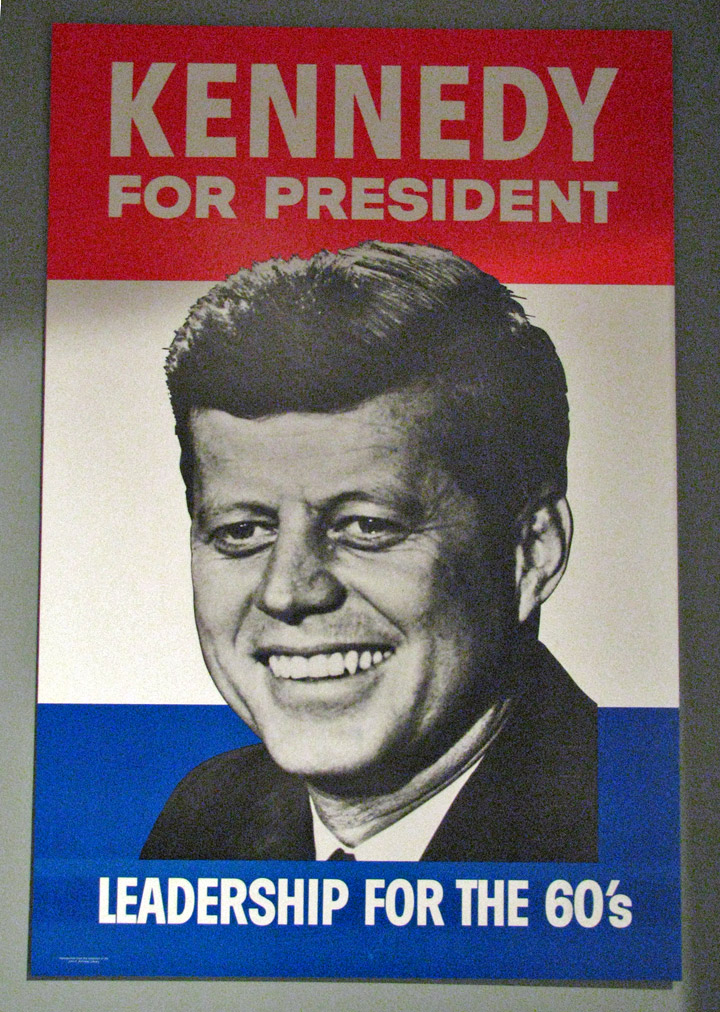
In January 1966, when Massachusetts Governor John A. Volpe signed a bill
allowing the state to purchase the land for the site — an old train yard
belonging to the Massachusetts Bay Transit Authority — it was expected that the
project would be complete by 1970. The original design was a large complex
comprising the John F. Kennedy Library and Museum, the John F. Kennedy School of
Government, and an Institute of Politics. However the project faced many delays.
The MTA would not agree to remove the heavy machinery from the land until 1970.
By that time construction costs had risen to over $20 million. Only now could
Pei prepare a six-month study of the site’s soil, and he said the “money we had
six years ago, today will barely pay for 60 percent of the original plans.”
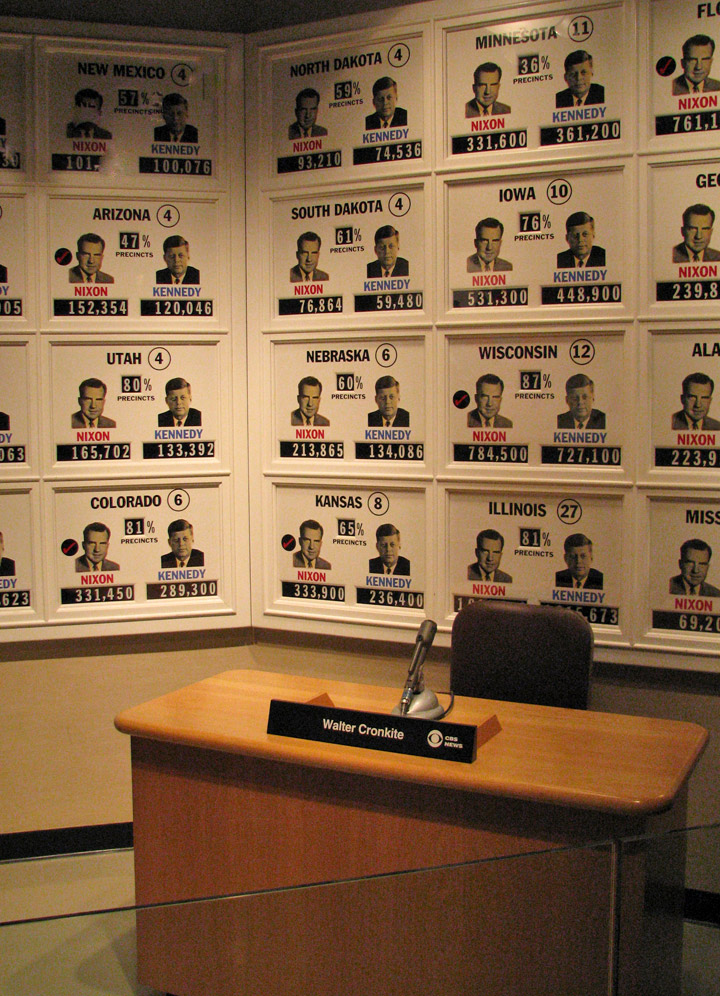
Walter Cronkite studio on the night of the vote
Robert Kennedy, by then a New York Senator, had been serving as president of the John F. Kennedy Library Corporation until he was shot and killed in 1968. Weeks before, William Manchester and Harper & Row donated $750,000 to the library. The first in a series of installments expected to total $5 million, came from the profits of the book The Death of a President which caused a bitter feud between the Kennedy’s and Manchester. Mrs. Kennedy remarked “I think it is so beautiful what Mr. Manchester did. I am glad that Senator Kennedy knew about it before he died.” The youngest of the Kennedy brothers, Senator Edward Kennedy, would step down as vice president of the corporation to fill the newly vacant position.
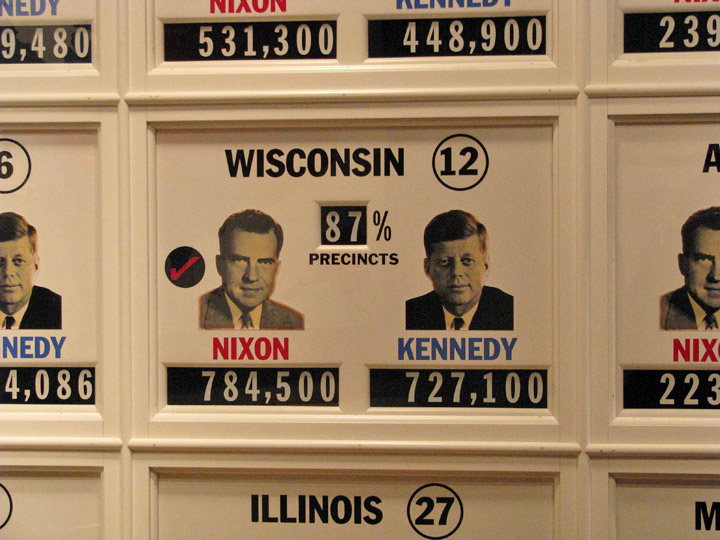
Wisconsin going for Nixon
By 1971, construction had still not begun; researchers and scholars were forced to work out of the Federal Records Center which was temporarily housing some of the 15 million documents and manuscripts. Pei said there was finally “a clear way ahead,” however, he was asked to save on construction expenses by using inexpensive materials. This would translate into Pei working with concrete instead of his preferred stone.
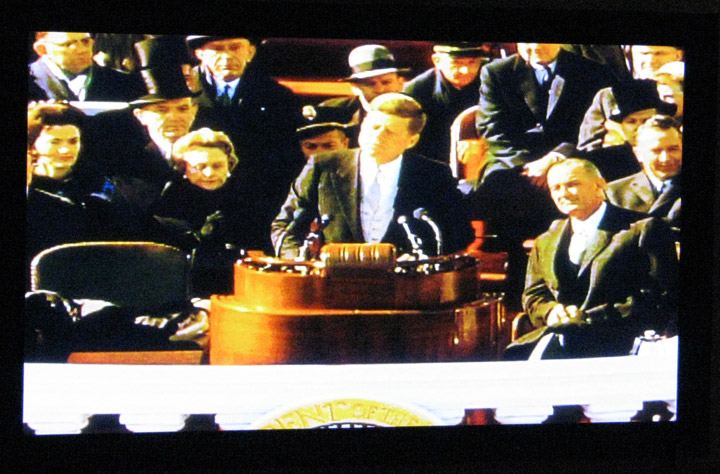
inauguration as the President
On May 22, 1971, President Kennedy’s Vice President and successor, Lyndon B. Johnson saw the dedication of his Presidential Library in Austin, Texas. On the campus of the University of Texas at Austin, and next to the LBJ School of Public Affairs, he would beat the Kennedy team to building the first Presidential Library that also served as a place of scholarly research. He would not live to see work begin on his predecessor's.
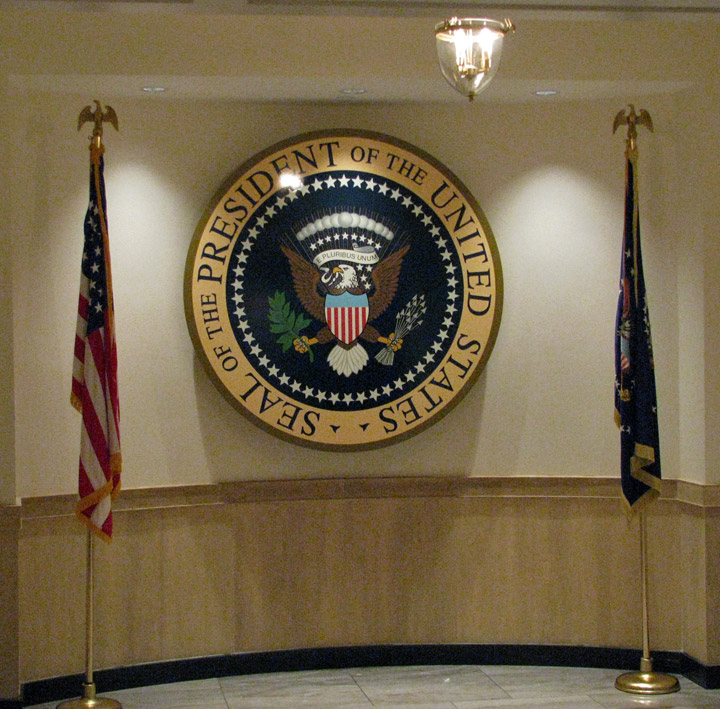
the office of President
Meanwhile, the Cambridge community was in fierce opposition of having library being built in Cambridge at all. Although originally welcomed in 1965, the library was now seen as a great attractor of over a million annual tourists who would change the neighborhood with “hordes of tourists, automobiles, fast-food franchises and souvenir shops,” as well as cause a negative environmental impact. One neighborhood group would file a Federal suit demanding that the General Services Administration study, which found that the great number of visitors would have “no adverse effect on the area,” be reexamined.
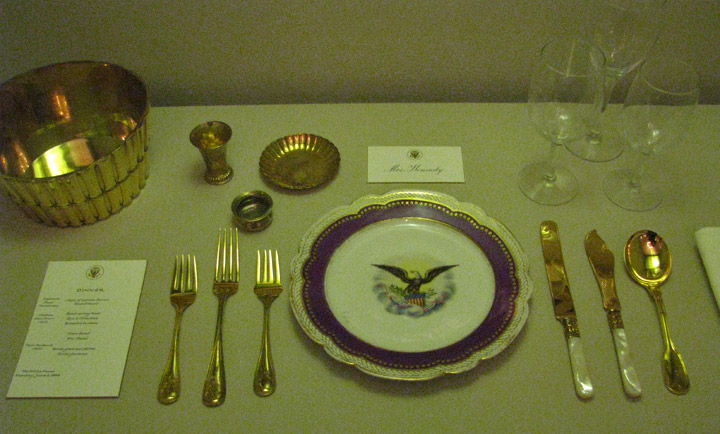
White House dinner service
Stephen E. Smith, a Kennedy in-law
who heads the John F. Kennedy Library Corporation decided that “we want the
Kennedy Library to be a happy place. It would not be in keeping with the nature
of this memorial for it to open in an atmosphere of discord and controversy.”
And in February, 1975 the plans for having the library where President Kennedy
would have wanted it, were dropped.
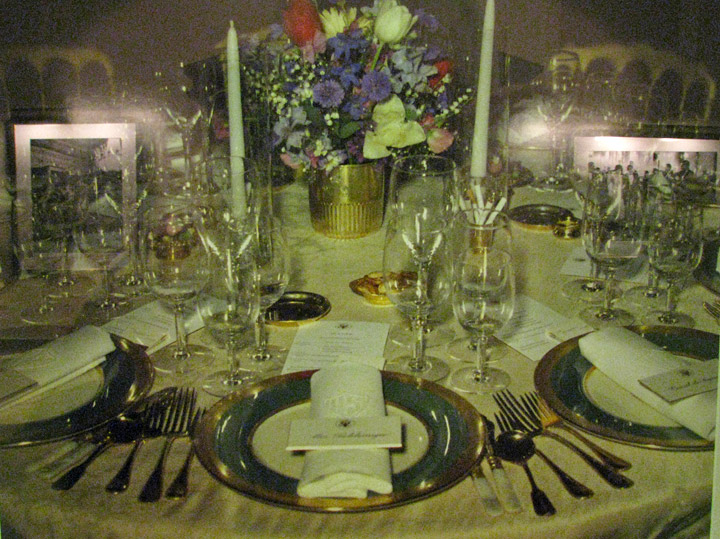
The new location of the site was Columbia Point. A commuter campus of the
University of Massachusetts, described as a group of “massive, blocky
structures…in sharp contrast to the mellow and urbane atmosphere of the
library’s original site near Harvard Square.” The site was originally a garbage
dump, Pei recalls finding old refrigerators and appliances under the soil. In
all seriousness, he asserted that one could toss a lit match on the earth and
watch the ground ignite as the soil emitted methane gas. One thing the site did
have going for it was that the community was not opposed to the area being
landscaped to house the library.

tested by Russia
June 12, 1977 marked the official groundbreaking for the library with construction following in August. Although the site was a landfill it did overlook Boston, Dorchester Bay and the ocean. The area was covered in 15 feet (4.6 m) of earth and topsoil. Pei was particularly proud of the landscaping results.

and by segregation in the South
The design would be a simple geometric structure with a large glass pavilion. The concrete tower stands 125 feet (38 m) tall and houses offices and archives. A circular section contains two theaters and is connected to the tower by the 115 foot (35 m) grey-glass pavilion. The concrete finish of the building directly reflects the budget. With more money Pei would have made the building with stone which he believes offers a nicer finish with more detail. The materials chosen kept the costs within budget, in total costing $20.8 million.

the Pei designed building
Over 30 million people contributed to the cost of construction, which more than 225 construction workers worked to complete before the end of 1979.
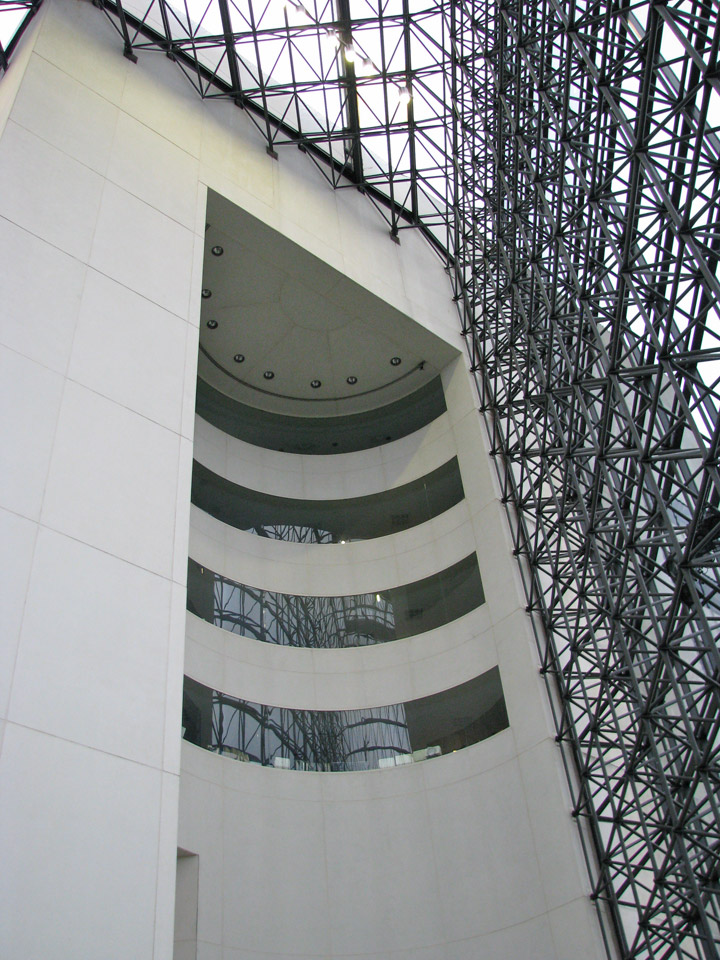
The official dedication was held on October 20, 1979. Outside the building on
the green, on a blue-carpeted stage with a bank of yellow chrysanthemums sat the
Kennedy family and those close to them. Among many others, President Jimmy
Carter was in their company. The ceremony began with President Kennedy’s
daughter, Caroline Kennedy, introducing her brother, John F. Kennedy, Jr., who
read from the Stephen Spender poem, I Think Continually of Those Who Were Truly
Great.
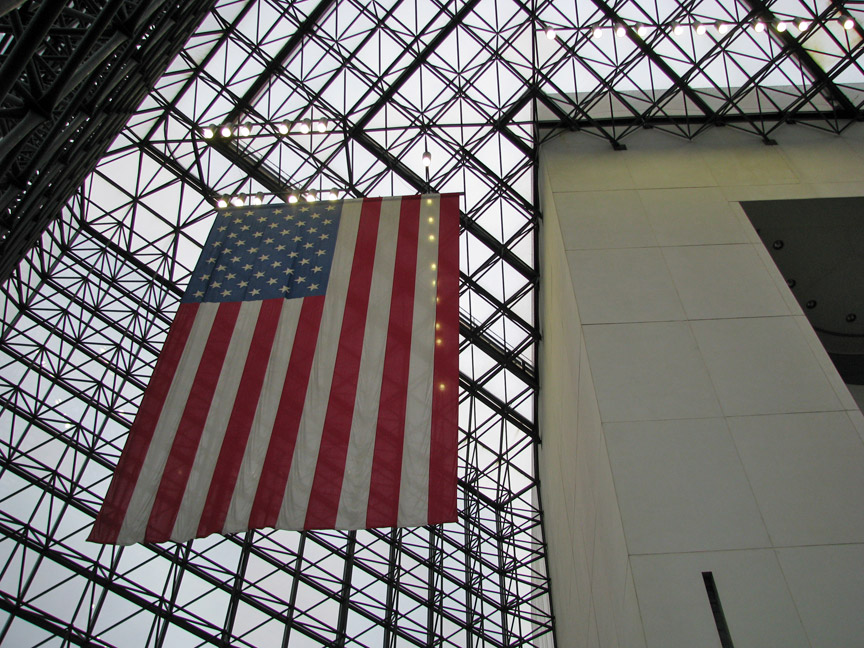
President Carter said of John F. Kennedy that he embodied “the ideals of a
generation as few public figures have ever done in the history of the earth.” He
spoke of openly weeping upon hearing about the death of Kennedy, something that
he had not done since his own father died, ten years before. Afterwards, he
accepted the library “on behalf of the American people” and the National
Archives and Records Administration.
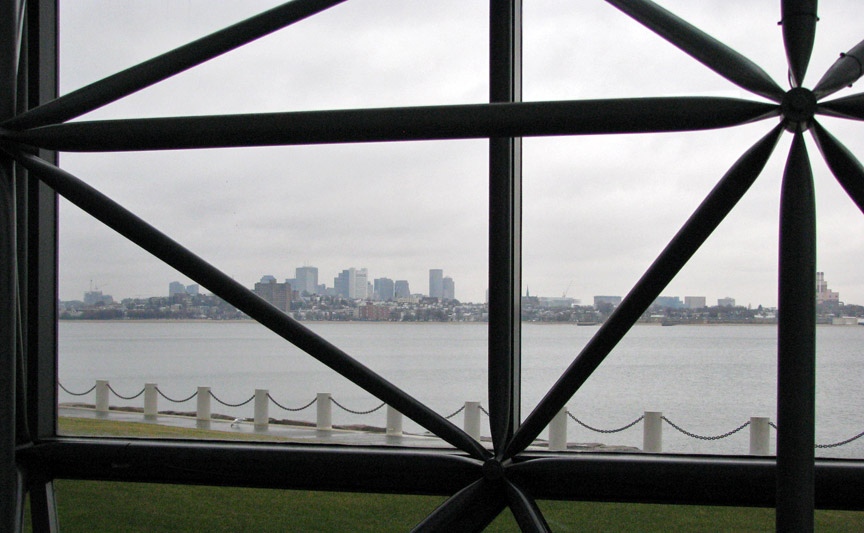
the view of the harbor
Senator Edward Kennedy, said of his
brother's life, that it "was a voyage of discovery, a quest for excellence that
inspired universal trust and faith. In that brief unfinished journey, he made us
believe once more in the great historic purpose of this land. He filled America
with pride and made the nation young again."
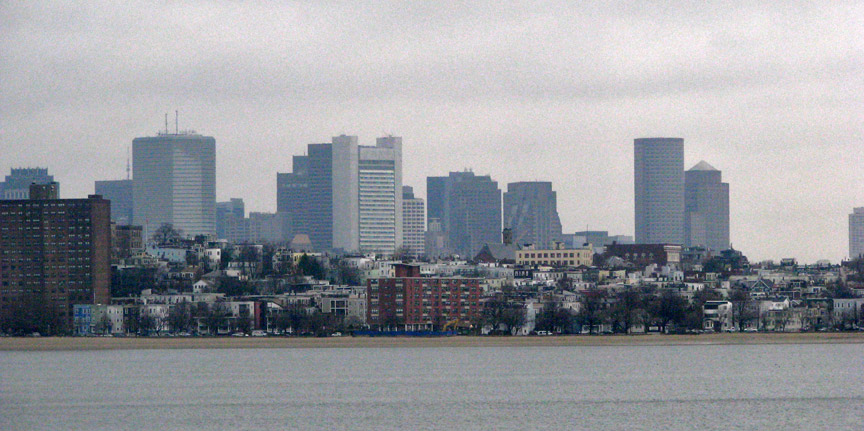
Boston as seen from the museum
The library's first floor features a museum containing video monitors, family photographs, political memorabilia. Visitors to the museum begin their visit by watching a film narrated by President Kennedy in one of two cinemas that show an orientation film — and a third shows a documentary on the Cuban Missile Crisis. They are then allowed to peruse the permanent exhibits on display, which include an exhibit on the US Space Program during Project Mercury; the Briefing Room is an exhibit on talks given to the public, at home and abroad; an exhibit on his presidential campaign trail; a look at the Kennedy Family; a section dedicated to the First Lady, and partial replicas of the Kennedy Oval Office and his brother Robert F. Kennedy's office as Attorney General at the Department of Justice Building, which has been named for him. After viewing the exhibits the visitors will find themselves in under the glass pavilion. Other galleries display changing temporary exhibits. Outside the library during the spring, summer and fall is Kennedy's sailboat, Victura.
Text from Wikipedia
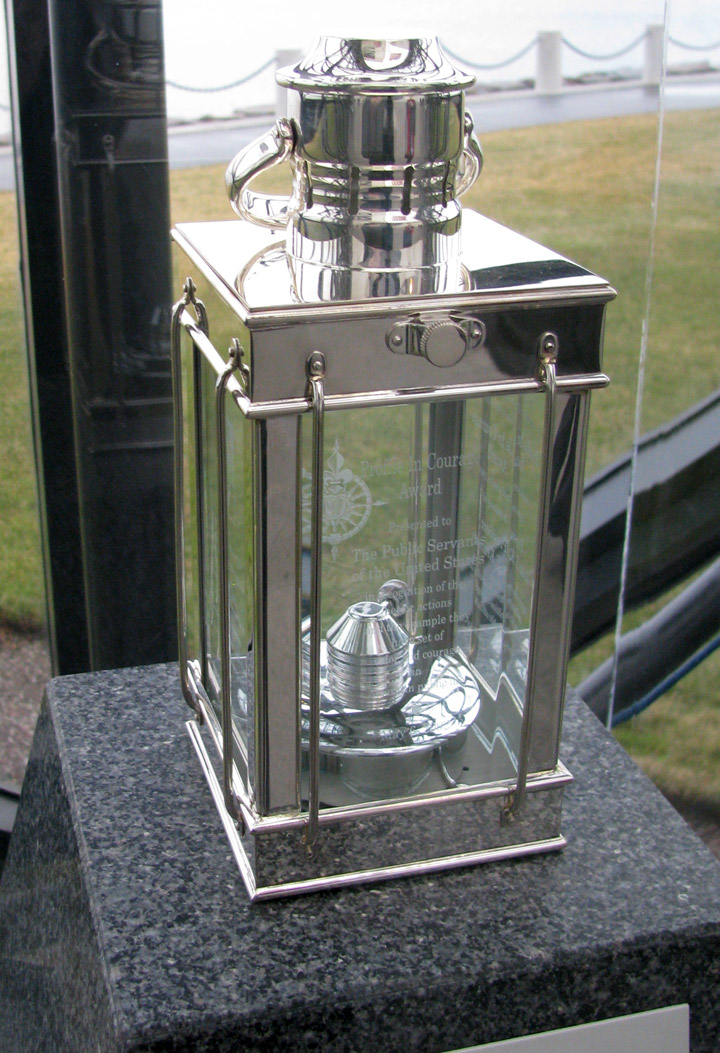
"Profiles of Courage" award
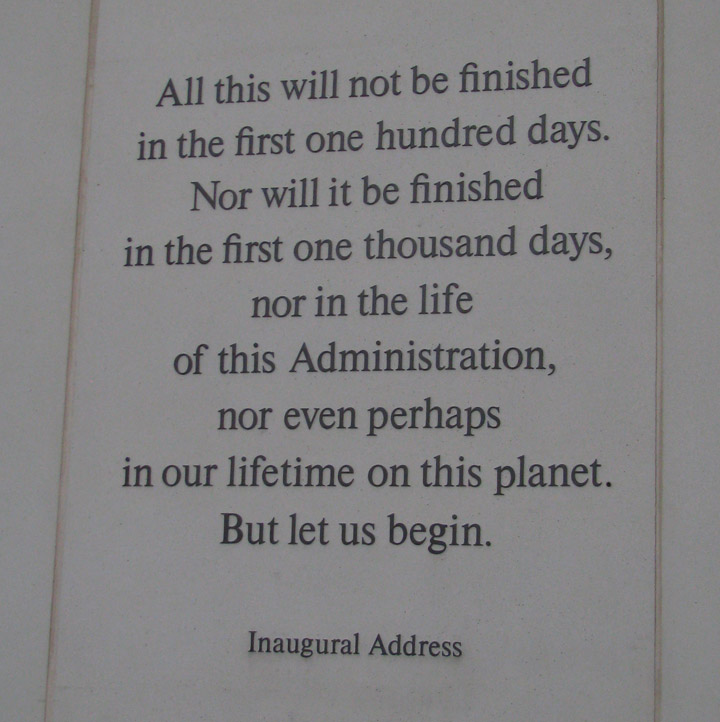
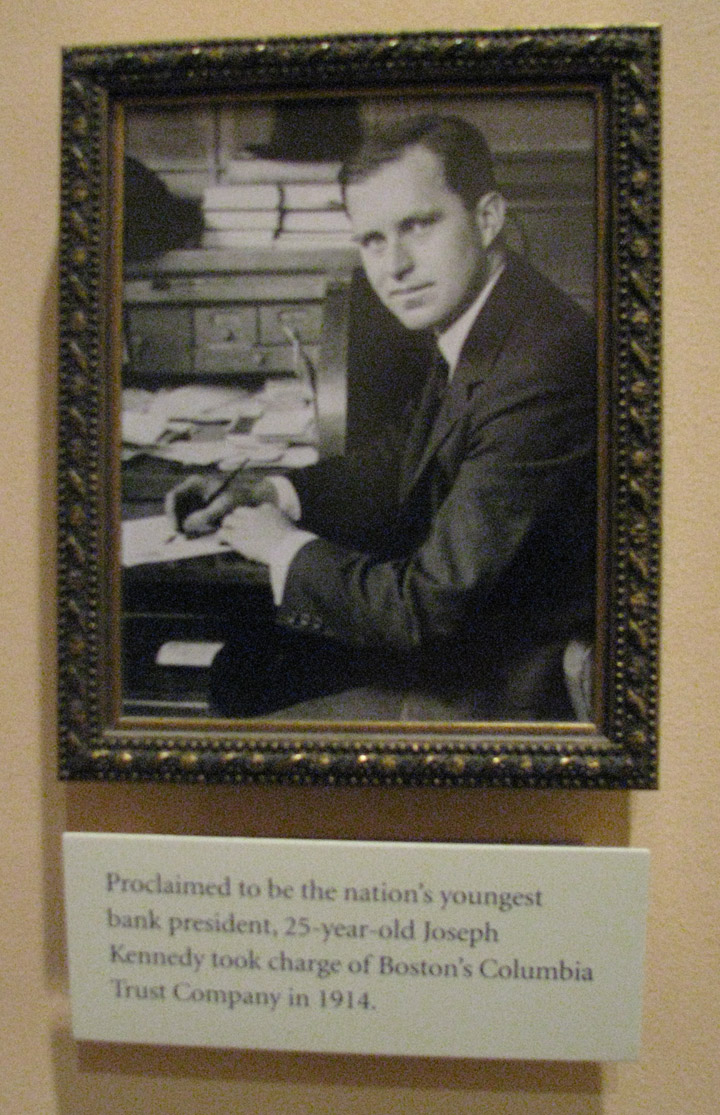
the President's father
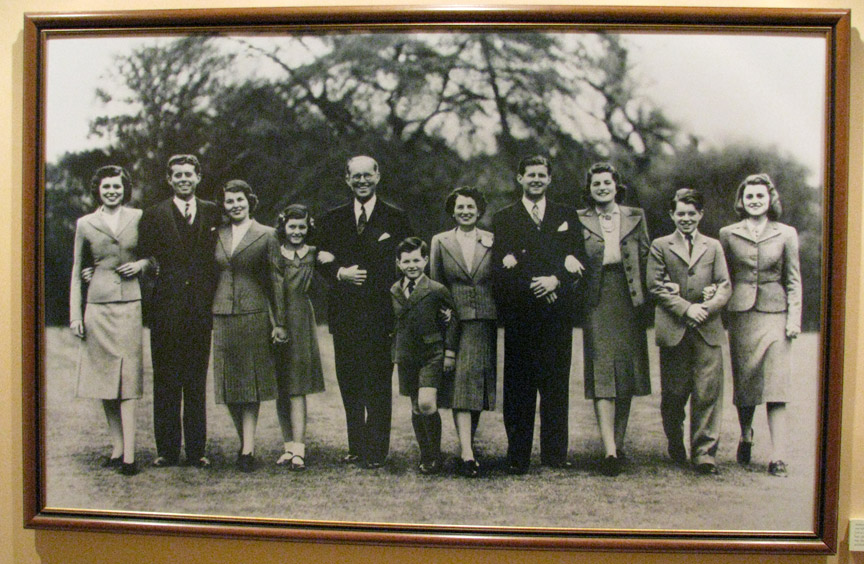
the Kennedy family
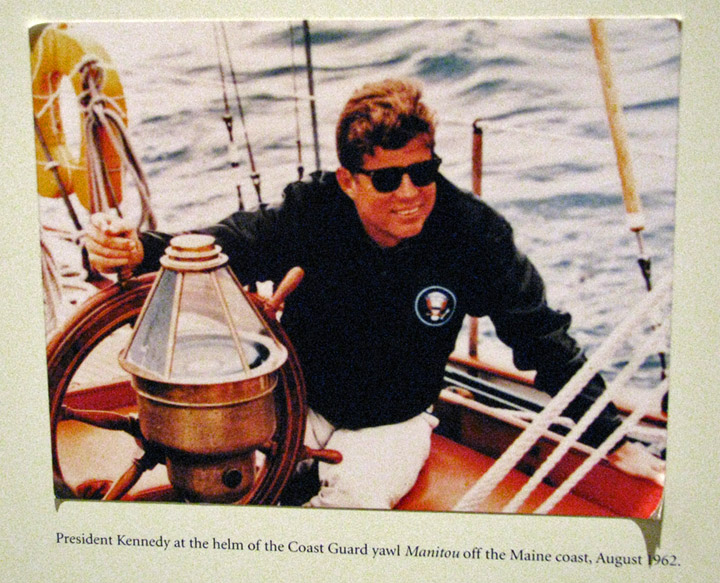
the President as a Yachtsman
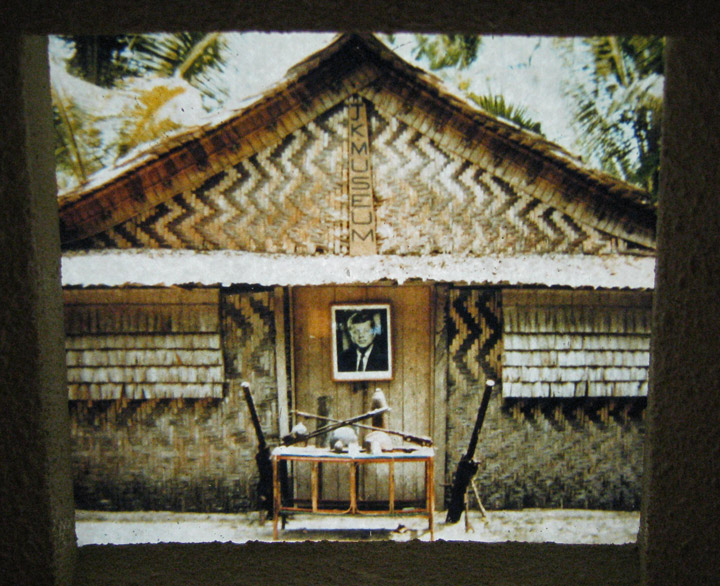
a museum in the South Pacific
dedicated to his PT boat commander days
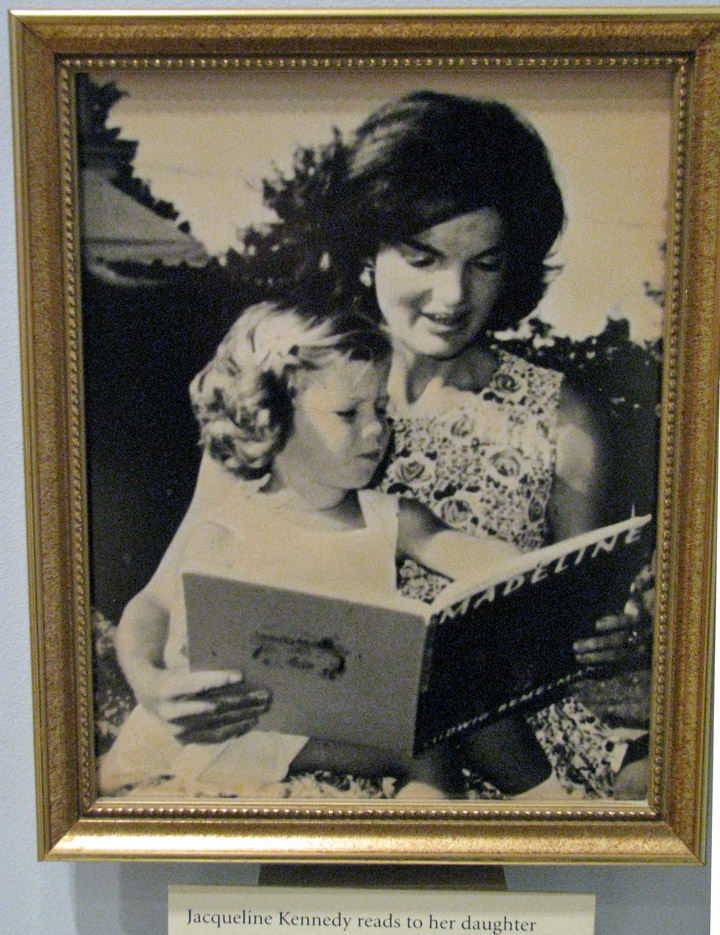
President's wife and daughter
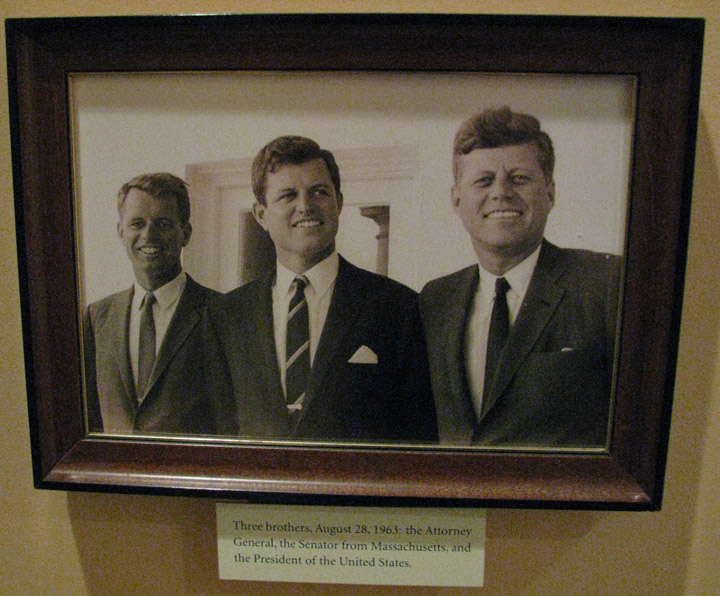
the three brothers
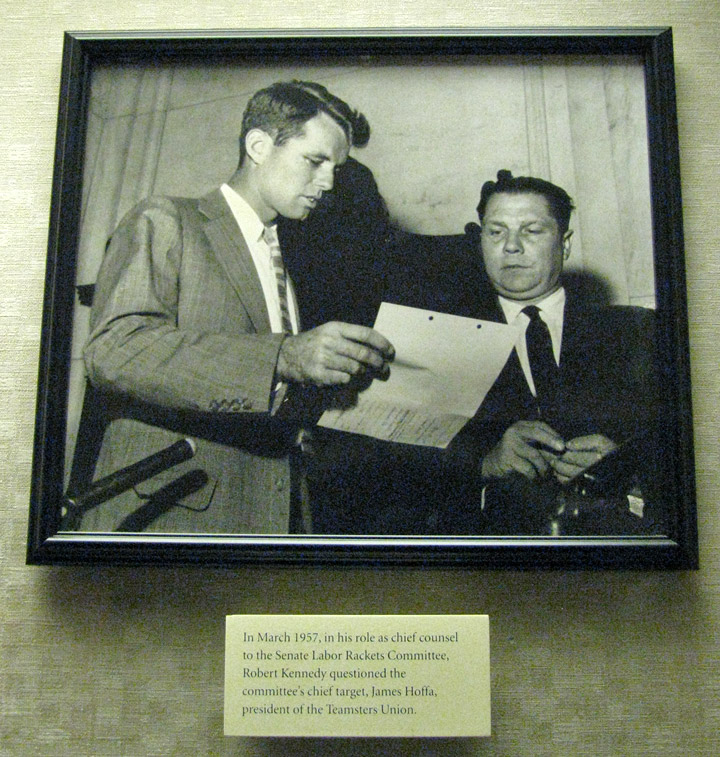
Bobby Kennedy with James Hoffa

his law degree
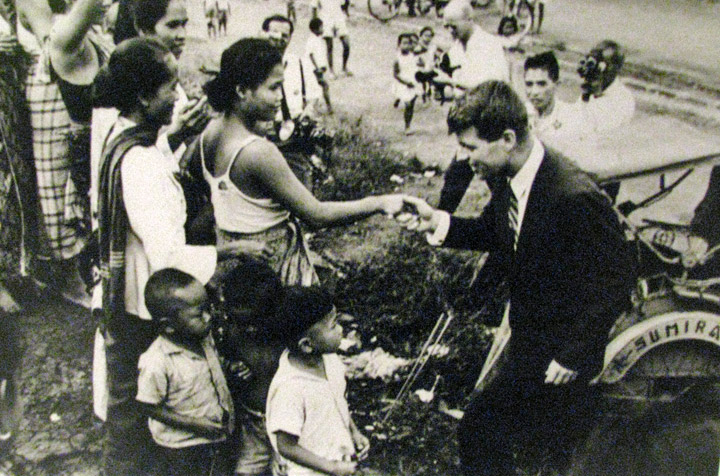
in the South Pacific
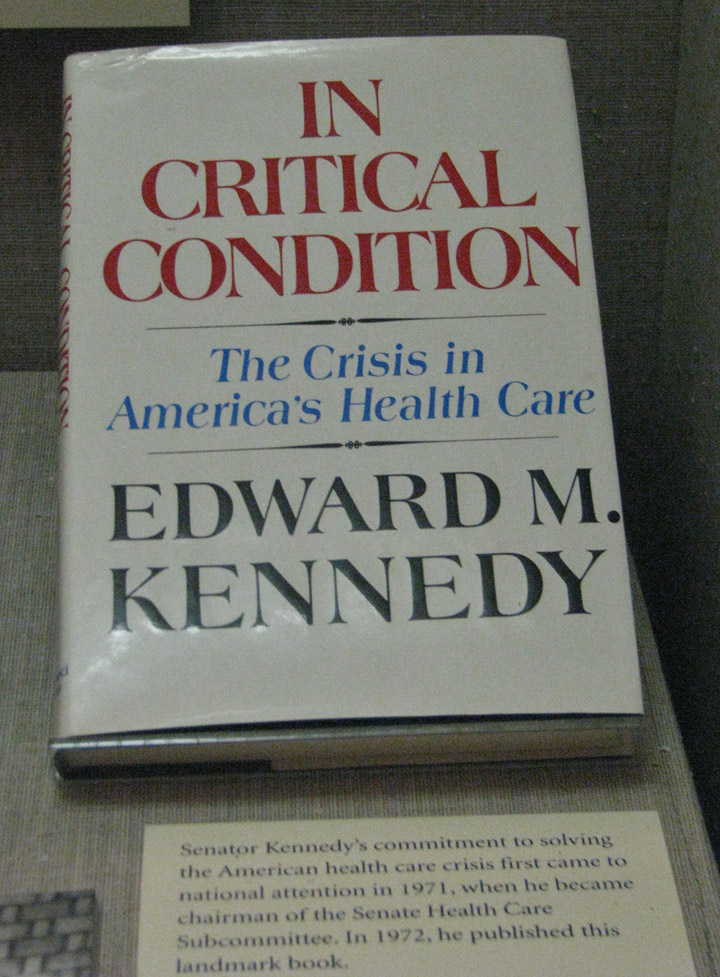
Edward Kennedy's book on Health Care